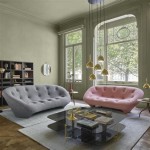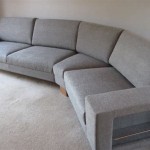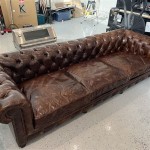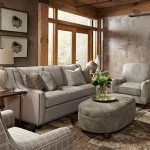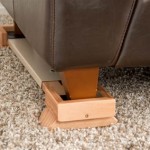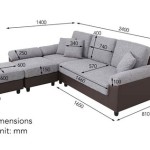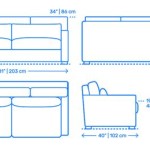```html
How Many Cushions On A 3 Seater Sofa: A Comprehensive Guide
Determining the ideal number of cushions for a 3-seater sofa is not a matter of fixed rules but rather a balancing act between aesthetics, comfort, and functionality. While there is no universally correct answer, understanding the factors that influence this decision can lead to a more satisfying and visually appealing living space. This article will explore the key considerations for choosing the appropriate number of cushions and arranging them effectively on a 3-seater sofa.
Sofa Size and Cushion Proportions
The dimensions of the 3-seater sofa itself play a crucial role in determining the optimal number and size of cushions. A larger 3-seater sofa can accommodate more cushions without appearing cluttered, while a smaller one may benefit from a more minimalist approach. It is essential to consider the overall length, depth, and height of the sofa to ensure that the cushions are proportionately sized and do not overwhelm the space.
Specifically, consider the seat depth. A deeper sofa might visually handle and practically benefit from larger cushions or even a greater quantity of smaller cushions without sacrificing seating space. Conversely, a sofa with a shallow seat depth might be more comfortable and visually appealing with fewer, smaller cushions that don't encroach too much on the available seating area.
The height of the sofa back is another critical factor. A sofa with a high back allows for taller cushions that can provide better back support, while a low-backed sofa may look better with shorter cushions that maintain a clean and streamlined silhouette.
Ultimately, the goal is to achieve a harmonious balance between the size of the sofa and the cushions, ensuring that they complement each other and create a visually pleasing arrangement.
Aesthetic Considerations and Personal Preference
The desired aesthetic of the living space is a significant factor influencing the number and style of cushions chosen. A more formal and traditional setting may call for a symmetrical arrangement with a consistent number of cushions, typically two or four. This creates a sense of order and elegance.
In contrast, a more casual and bohemian setting allows for greater flexibility and experimentation with cushion arrangements. Asymmetrical designs, featuring an odd number of cushions – typically three or five – often contribute to a relaxed and inviting atmosphere. Mixing and matching different sizes, shapes, and textures of cushions can further enhance the eclectic feel.
Personal preference is paramount. Some individuals prefer a minimalist approach with only a few cushions for a clean and uncluttered look, while others enjoy a more luxurious and layered aesthetic with numerous cushions providing ample comfort and visual interest. There is no right or wrong answer; the key is to create a space that reflects individual style and personality.
Color palettes also play a significant role. A cohesive color scheme, whether monochromatic or complementary, can tie the cushion arrangement together and create a unified look. Alternatively, using contrasting colors can add a pop of visual excitement and personality to the sofa.
The texture of the cushions can also contribute to the overall aesthetic. Combining different textures, such as velvet, linen, and leather, can add depth and dimension to the space.
Comfort and Functionality of Cushions
Beyond aesthetics, the primary purpose of cushions is to provide comfort and support. The number and type of cushions should be carefully considered to ensure that they contribute to the overall comfort of the sofa.
For individuals seeking optimal back support, larger, firmer cushions may be the best choice. These cushions can be strategically placed to provide lumbar support and promote proper posture. Alternatively, smaller, softer cushions can be used for added comfort and to fill in any gaps between the sofa and the body.
Consider how the sofa will be used. For example, if the sofa is primarily used for lounging and relaxation, a greater number of softer cushions may be preferred. Conversely, if the sofa is used for more formal seating, a smaller number of firmer cushions may be more appropriate.
The fill material of the cushions also impacts comfort. Down and feather fillings provide a plush and luxurious feel, while synthetic fillings offer greater durability and support. A combination of different fill materials can often provide the best balance of comfort and functionality.
The placement of the cushions is also crucial for maximizing comfort. Consider arranging the cushions in a way that encourages relaxation and promotes proper posture. Experiment with different arrangements to find what works best for individual needs and preferences.
For example, using a bolster cushion behind the lower back can provide excellent lumbar support, while placing smaller cushions under the arms can enhance relaxation and comfort.
When choosing cushions, consider the ease of maintenance. Cushions with removable covers can be easily cleaned, ensuring that they remain fresh and inviting for years to come. Durable fabrics that resist wear and tear are also important for maintaining the long-term appearance and functionality of the cushions.
The density of the foam or filling is also an important factor in determining the longevity and comfort of the cushions. High-density foam will retain its shape and provide better support over time, while low-density foam may flatten and lose its shape more quickly.
Ultimately, the ideal number and type of cushions for a 3-seater sofa will depend on a combination of factors, including the size of the sofa, the desired aesthetic, and the individual's comfort preferences. By carefully considering these factors, it is possible to create a space that is both visually appealing and remarkably comfortable.
The arrangement of cushions can also affect the perceived size of the sofa and the overall room dynamic. Arranging cushions symmetrically can create a sense of formality and order, while an asymmetrical arrangement can create a more relaxed and inviting atmosphere. The key is to experiment with different arrangements until you find one that suits your personal style and the overall design of the room.
Finally, remember that the cushions are an opportunity to add personality and character to your living space. Don't be afraid to experiment with different colors, textures, and patterns to create a unique and inviting atmosphere.
Consider seasonal changes when choosing and arranging cushions. Lighter fabrics and colors may be preferred during the summer months, while heavier fabrics and warmer colors may be more appropriate for the winter months. This can help to create a more comfortable and inviting living space throughout the year.
In conclusion, there are many factors to consider when determining the ideal number and arrangement of cushions on a 3-seater sofa. By taking the time to carefully consider these factors, you can create a space that is both visually appealing and remarkably comfortable.
```
How Many Cushions Should You Have On Your Sofa Furn Com

How To Arrange Sofa Cushions Homescapes

3 Seater Sofa How To Arrange Cushions On It Read Now

How To Arrange Dress Place Cushions On A Couch Or Sofa

How Many Cushions Should You Put On A Sofa

3 Seater Sofa How To Arrange Cushions On It Read Now

5 Ways To Choose Arrange Cushions On A Sofa Heal S Blog

How To Arrange Sofa Cushions Homescapes

Accent Sofa Couch With 4 Pillows 3 Seater Removable Back And Seat Cushions Modern Design Luxury Set For Living Room Office Grey Com

3 Seater Sofa How To Arrange Cushions On It Read Now

